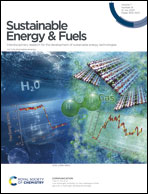Ultrathin electron and proton-conducting membranes for nanoscale integrated artificial photosystems
Abstract
Reducing the thickness of separation membranes without compromising their selectivity and robustness is the most effective way of maximizing the areal conductivity. This is especially important for the integration of visible light-driven water oxidation and carbon dioxide (or proton) reduction into a complete artificial photosystem on the shortest possible length scale – the nanoscale – because of the efficiency advantages over macroscale photosystems. In addition to their excellent separation property, ultrathin membranes of 10 nm thickness or less need to exhibit sufficient electrical and proton conductivity in order for the photocatalytic rates to keep up with the photon flux at maximum solar intensity. Two materials, graphene and amorphous silica with embedded molecular wires, have emerged as promising ultrathin membranes for the development of nanoscale integrated solar-fuel systems. Moreover, electrically conducting metal–organic or covalent–organic frameworks can be used to fabricate high surface area-supports that enable the use of molecular catalysts and/or light absorbers at an adequate areal density for nanoscale integration with graphene membranes. Following an overview of the electron and proton conductivity of these ultrathin materials and recent examples of photoelectrocatalytic applications that take advantage of some but not all the properties that constitute a complete functional membrane, the status and future opportunities for complete nanoscale integrated photosystems featuring an ultrathin membrane are discussed.



 Please wait while we load your content...
Please wait while we load your content...